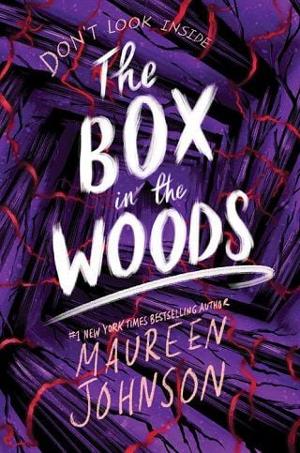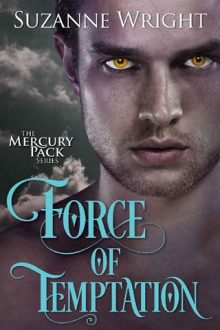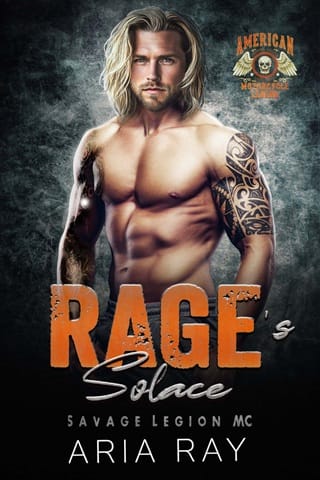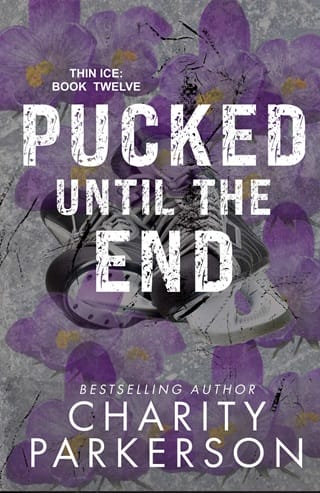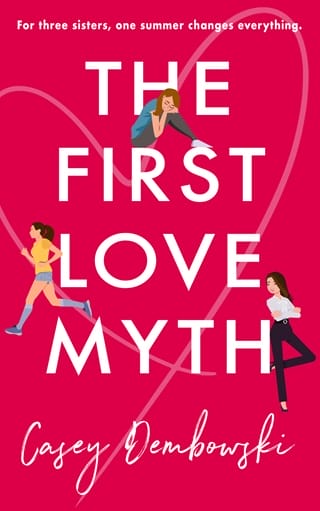Chapter 4
4
IT APPEARED THAT CARSON HAD CORRECTLY READ THE ROOM WHEN HEreturned with a stack of pizza boxes containing every possible kind of cheesy, meaty pizza. The traveling, the reunion joy, and the sweet woodland air seemed to have stimulated all their appetites, and the pies were soon torn apart and consumed. For his own meal, Carson brought a giant cup of thick blue juice and regarded the pizza carnage like someone watching a nature documentary.
“So you own a box service, right?” Nate asked innocently as he reached for his fifth slice of pizza. “One of those get-a-box-every-month things?”
“Box Box,” Carson said.
Nate knew all this already, which meant he was asking for entertainment, rather than information.
“What is it, though?”
“Every month you get a curated selection of boxes,” Carson replied.
“What’s in the boxes?”
“Boxes. It’s a box full of boxes. We have themes, like bathroom boxes, or closet boxes, or gift boxes, kitchen boxes, garden boxes. Everyone needs boxes. We’re starting a new thing in a few months. We’re either going to call it Bag Box or Bag Bag. You get reusable bags. See all those fabric samples over there? Those are for the bags. I was Think Jamming them.”
“Why?” Nate said.
“Why what?”
“Why would you want a bag full of bags? Or a box full of boxes?”
“It’s environmentally friendly,” Carson replied.
“How?”
“Because you get the boxes so you don’t have to buy them. Same as the bags.”
“Isn’t it worse to send people a bunch of boxes they don’t need and then have them get rid of some of them? Especially when you add all the packaging, and the transport and everything?”
“It’s about convenience as well,” Carson said.
“How is it convenient to get a bunch of boxes or bags?”
“People like it,” Carson said, though more quietly. “We have over four hundred thousand subscribers. Anyway . . . we should get started.”
Nate happily chomped off half a slice of pizza in one bite as Carson gestured them over to the beanbags and sofas in the center of the room. Stevie, Janelle, and Nate moved over, Nate taking a pizza box with him. Carson picked up a remote control. The lights dimmed gently and there was a soft whirring noise as a massive screen unfurled from the ceiling.
A title slide appeared on the screen.
THE BOX IN THE WOODS MURDERS,
JULY 6–7, 1978
“It’s important to set a sense of this town, this camp, at this time, because these murders are very much of a time and a place. . . .”
Stevie could tell at once that Carson had written this line in advance and was proud of it. He was testing out his podcast script, for sure.
“The 1970s were a different era. For example, information and communication were more limited . . .”
“Well, yeah,” Nate said. “That’s why their slasher films work. No one knows anything and no one can call for help.”
“Right,” Carson said. “And the lack of communication impacted safety. This is a time when everything was loose. Your comings and goings couldn’t be tracked. Everything relied more on word of mouth and who knew what. The world was smaller. The camp was an extension of the high school and the town—a closed loop. Everyone knew everyone. Which brings us to . . .”
BARLOW CORNERS
This slide featured a photo that Stevie had seen several times now; it was the image that pretty much every book or article or documentary on the case included. It was a color photo with a sepia tint, the colors washed out and overly bright at the same time. A group of people stood in front of an equestrian statue decked out in red, white, and blue bunting. Most of the people in the group were middle-aged. The men all wore Bermuda shorts with belts. The women wore dresses or pants that they would have referred to as “slacks.”
“So this,” Carson said, “was a picture taken at the Bicentennial, in 1976, two years before the murders. The town built and dedicated a statue to the town founder, John Barlow, a minor Revolutionary War hero. A local photographer took the picture and submitted it to Life magazine, and it ran in a special commemorative edition. There are a few people in this photo associated with the case. It says a lot about the town—a small place, all American, everyone knows everyone. And pretty much everyone was connected in some way to . . . ”
THE VICTIMS
“We’ll start with the basics,” Carson said. “The four victims. All recent graduates of Liberty High. All residents of Barlow Corners. All four worked at the camp. This is Eric Wilde. . . .”
He brought up a picture of a boy with wildly curly light-colored hair and a goofy grin.
“Eighteen years old. Son of the town librarian and a teacher at Liberty. Generally well-liked but could get into trouble. Diane McClure . . .”
A tough-looking redheaded girl with a thin smile and a freckled face appeared on the screen.
“Daughter of the owners of the town diner, the Dairy Duchess. Academically unremarkable. Liked rock music and having fun. Your basic seventies teenager. She was girlfriend to this guy, Todd Cooper.”
Fashions come and go, but jawlines are eternal. Todd Cooper had a good one, if a big one. His face was almost square. He had medium-length hair, in a seventies-style feathered cut. There was a thin, wry smile on his lips. His face exuded confidence—arrogance, even.
“Son of the mayor. Football captain. And a lot of trouble. More on him later. The real outlier of the group was . . .”
A photo of a girl came up. It was hard to say what made her seem different from the rest. The photo was the same quality, and her raven hair was in long seventies-style wings. She had big brown eyes, and a sincere smile. There was something about her, something in the way she looked at the camera. There was a bright spark there, something that connected to Stevie viscerally.
“. . . Sabrina Abbott, the town good girl, daughter of a dentist. Top student at Liberty High. Volunteered at the library every week, reading to little kids. It’s one of the enduring mysteries that surrounds this case—why did the town good girl go with three of the bad seeds to a drug buy in the woods? But let’s get to it. . . .”
THE MURDERS
“Here are the undisputed facts. On the night of July sixth, Sabrina, Eric, Todd, and Diane left the camp somewhere around eleven at night in Todd’s Jeep. They went to the woods to pick up the weekly pot delivery. Eric Wilde was the dealer at camp. Todd and Diane were a couple, and Sabrina Abbott was along for the ride, for whatever reason. The next morning, one of the campers found Eric Wilde, facedown on a dirt path through the woods that led to the theater and archery range. He had been struck on the head and stabbed six times. Five of the wounds were fatal.”
He brought up a black-and-white photo of the scene, taken from a short distance. There was a sheet over the body on the dirt path, and a group of police officers standing around it, conferring with one another.
“The camp quickly figured out that the other three were missing, so the police rode out to try to find them. The Jeep was parked alongside the road. They found the campsite. . . .”
He brought up a picture of the campsite—a smoldering fire, a blanket, a camping lantern, a plastic tray with something all over it, some sodas, a backpack.
“No sign of a struggle,” Carson said. “It looks like they simply left the site. The police searched the area and found an old hunting blind. When they opened it up, well, that was the box in the woods. Pictures of the bodies aren’t available to the public, just a description. Here’s a diagram. . . .”
A creepy drawing of three featureless bodies in a rectangle, with dots and dashes to mark wounds and bindings. Stevie had seen these kinds of drawings before, but they always unnerved her.
“The bodies were arranged in the box neatly. Diane and Sabrina were facing one way, and Todd was turned the other, his head between the girls’ feet. Todd and Diane both had massive head wounds, like Eric. Then they were each stabbed multiple times—Todd had sixteen stab wounds, and Diane had nine. Sabrina was the only one without a head wound. She was stabbed twenty-one times and had defensive marks on her hands, so she was probably facing her killer. The evidence suggested they were killed at the campsite and then moved to the box. The killer bound their legs and wrists in red nylon cord. There was a single word written in white paint on the inside of the box’s lid . . .”
He pulled up the most famous photo from the case, one of the only crime scene photos that had been made available to the public—the word SURPRISE painted in rough, blocky letters. It was so comically ghoulish it seemed like it couldn’t be real.
“There are three major theories about who did it,” Carson said. “Let’s do the least likely first. . . .”
DRUG DEAL
“The police first suspected that it was a drug deal gone wrong. Eric Wilde was the camp pot dealer, and the four of them were out in the woods that night picking up the weekly supply for the camp. So people thought—illegal activity in the woods, must have something to do with it. Also, Eric was found in a different location than the others. Sabrina, Todd, and Diane were in the box. Eric was almost at the camp.”
“But this one is dumb,” Stevie said. “They found all the pot at the crime scene, so the sale had gone through. There’s no reason for anyone to get killed over a little bit of pot that no one even bothered to take.”
“Agree,” Carson said. “Basically, no one really thinks this had anything to do with it, but it was an easy explanation, especially then. Pot in the woods ending in multiple murders? Sure, why not. Now, the next one is more compelling and was the most popular theory for a long time. . . .”
THE WOODSMAN
“So the 1970s were kind of the golden age of serial killers. There were loads of them. There was one known to operate in the area at the time called the Woodsman. The first murder was in 1973, in New Hampshire. Then there were two in Massachusetts, one each in 1974 and 1976, and two in upstate New York in 1975. There were two more cases, in 1979 and 1980, both back in New Hampshire. The Woodsman stabbed his victims and left them in the woods, covered in sticks and debris, with their hands and feet bound in red cording. In all the cases, the word Surprise was written somewhere near the scene, usually on a tree. So it looks like the Woodsman, right? Now, here’s the thing . . . the Woodsman’s crimes were in the news. The local paper even covered the story in 1976.”
Carson brought up a photocopy of an old newspaper article entitled “Woodland Killer Strikes Near Hawley.”
“This murder happened about a forty-five-minute drive from here, so it was local enough. It’s a real seventies kind of story. A nineteen-year-old girl named Becky O’Keefe was a free spirit who was spending the summer camping in the Berkshires. Her friends last saw her when she left to hitchhike to get to another campsite to meet a guy. She was found two days later. This newspaper article says that her legs and wrists were bound in red cord, and that the word Surprise was written on a tree. This is pretty much exactly how the bodies in the box in the woods were found. But the police kept some details out of the press: in all the Woodsman killings, the bodies were bound with torn pieces of silky red fabric ripped into pieces, and all the messages were written in chalk. So it seemed obvious from the start that someone was copying the details in the paper. This killer used white paint and red nylon cord.”
“So it was a copycat,” Stevie said. “Did they find out anything about the paint or the cord?”
“The white paint was found to be a common type that you could buy at almost any hardware store in the northeastern United States. The cord was a little more interesting. . . .”
A close-up photograph of a piece of red cord on a white background came up on the screen. There was a ruler under the cord, showing that this section was six inches long.
“This particular cord was sold in sporting goods stores, and it was commonly used in water-related sports in the area. Fishermen used it to secure boats and supplies. The camp used it to tie up canoes. The police tried to run down all recent purchases of the cord, but the best guess is that someone probably lifted it from a boat or a supply shed. It would have been easy enough to get.”
“Can’t they test for DNA?” Janelle said.
“Here’s where things in this case get ridiculous—the police got rid of most of the clothing the victims were wearing.”
“What?” Nate said.
“It’s amazing, but it’s true. They still have Eric’s T-shirt, but all the rest? Someone just . . . got rid of them. They tested the shirt and came up with a profile, but it didn’t match the Woodsman samples. Could have been the killer’s. Could have been anyone’s. There was nothing usable on the cord.”
“Didn’t they test the town or anything?” Nate asked. “Don’t they do that, take samples from everyone?”
“What they found wasn’t good enough to test everyone against. And now we come to the third. . . .”
REVENGE
“Revenge,” Nate read in a low voice. “Revennnnnge.”
He brought up a photo of a smiling young boy.
“The previous December,” Carson said, “in 1977, an eleven-year-old named Michael Penhale was struck and killed by a car. No one was ever arrested or charged. It was written off as a hit-and-run. But it seemed to be common knowledge in town that Michael was run over by Todd Cooper. His brother, Paul, was friends with the victims and worked at the camp. The neighbors said that the Penhale family was home on the night of the murders, and Paul Penhale had someone who could place him at the camp that night. That person was Shawn Greenvale, Sabrina Abbott’s ex-boyfriend. Sabrina had broken up with him a few weeks before. Some people speculated that either Paul or Shawn might have wanted to kill Todd or Sabrina, respectively, but they were also seen by Susan Marks, the head of camp. Also, nothing ties them to the case except for the fact that Todd probably hit Michael Penhale, and Sabrina broke up with Shawn. And that is pretty much that. The case was so badly handled from the start that it was dead in the water.”
Carson hit the remote again, and the screen glided up to the ceiling, rolling itself snugly back to sleep. The lights came up like a sunrise.
“Our goal this summer,” he said, “is to make some headway into a case that’s been dormant for decades. It may seem difficult, but we have a lot going for us. I own the camp, so we can turn it upside down if we want. Lots of people who were alive then are still here in town. We have the internet. And we have Stevie. We have an early start tomorrow. I’ll come get you guys at, say, seven?”
When Carson left, the three friends sat in their respective beanbags for a moment in silence.
“The murder camp thing is a little less fun now,” Nate finally said.
 Fullepub
Fullepub 